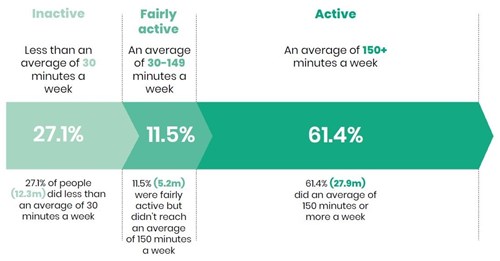The impact of coronavirus on physical activity
The various Non-Pharmaceutical Interventions (NPI) aimed at curbing the spread of coronavirus have exacerbated levels of physical inactivity. Not only have people been more sedentary due to spending more time at home, but the various physical activity and leisure opportunities, such as fitness centres, swimming pools and outdoor gyms, have been closed.
The coronavirus pandemic has had a negative impact on the prevailing rates of physical activity for various groups. In addition to this, the groups that were already pre-disposed to being less active, are more likely worse off now. Low rates of physical activity could persist for the long term as there is no evidence for the return to normal (or an increase) in physical activity levels up to 3 years after a disaster. More information on this can be heard in the ‘Considerations for physical activity in a post-COVID environment’ webinar with Dr Alex Christensen.
Sport England has completed various pieces of research on the pandemic and physical activity, including; ‘Understanding the impact of coronavirus and physical activity, situation report and data’ which can be found here and the pandemic impact on activity levels 2021 report here . The research shows that not all groups or demographics were affected equally, with women, young people aged 16-24, over 75s, disabled people and people with long-term health conditions, and those from Black, Asian, and other Minority Ethnic backgrounds most negatively impacted beyond the initial lockdown period.

